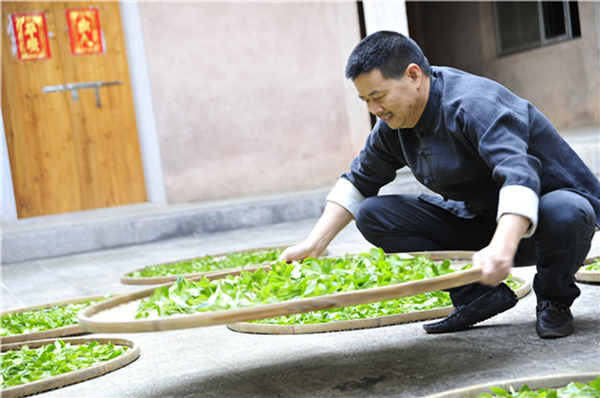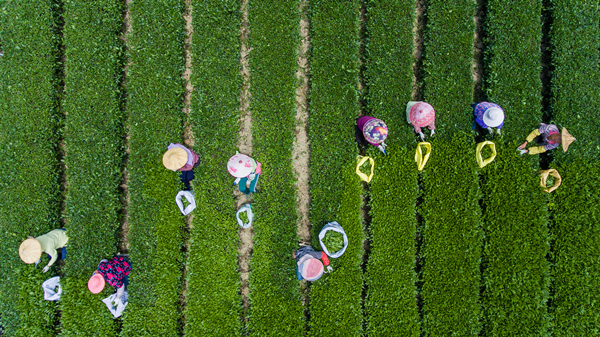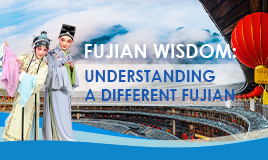County welcomes prosperity with oolong tea

Wei Yuede dries tea leaves in the sun in Anxi county, Fujian province. This step is crucial to making good tea as the drying process preserves the flavor of the tea leaves. [Photo provided to chinadaily.com.cn]
Anxi county in Southern Fujian has been transformed from the largest poor county in the province to being among the top 100 counties in China. The secret to its success lies in its tea industry and the well-preserved tea-making heritage.
Tieguanyin in Wei Yuede's tea mountain enters its harvest season in autumn. Tieguanyin is a premium Chinese oolong tea which originated from Anxi.
"Making good Tieguanyin tea requires long-term practice and talent. I have over 3,000 apprentices but only a dozen of them have mastered the tea-making technique," said Wei, who was born into a family that had been in the industry for nine generations.
Wei, who is now the owner of a large tea corporation that produces, makes and sells tea in Anxi, has been considering ways to preserve and carry forward the traditional artistry of making Chinese tea.
"The protection, inheritance and development of the Anxi Tieguanyin production technique have entered a new era. We should constantly adapt to the changes of the times and combine the ancient technique with the modern science and technology," he said.
For example, Wei has replaced white wool paper with aluminum mold bags for tea packaging as this can prolong the shelf life of the tea.

Villagers in Anxi pick tea. [Photo/VCG]
In 2005, Anxi Tieguanyin became the first "well-known Chinese trademark" of tea in China. In 2008, Anxi's oolong tea-making technique (Tieguanyin-making technique) was listed as a national intangible cultural heritage.
Hailed as the "tea capital of China", Anxi relies heavily on its tea industry for economic growth. In 2020, the county's annual regional GDP reached 74.76 billion yuan ($11.79 billion).




